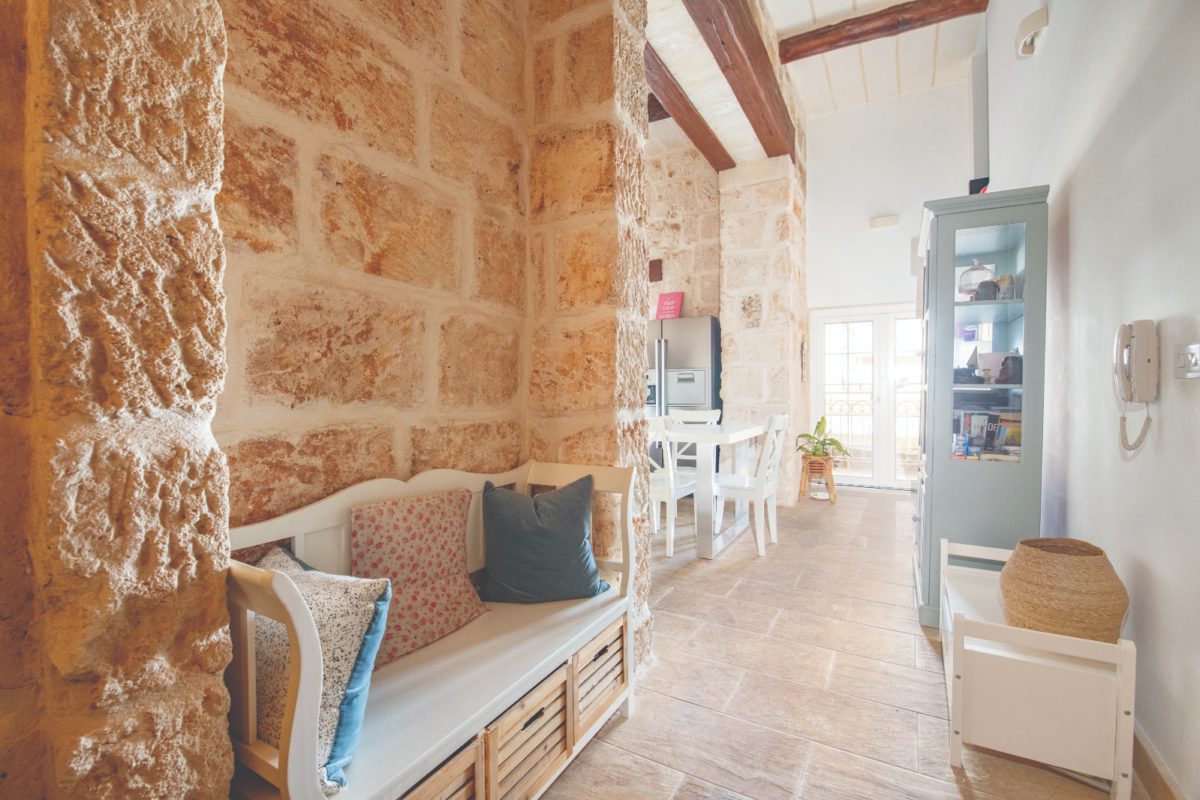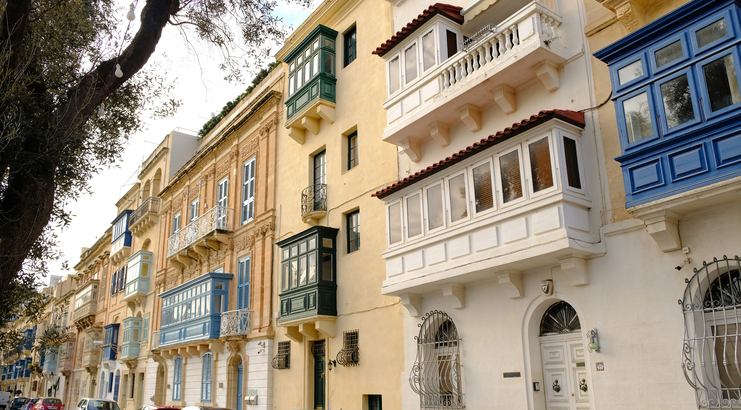New property developments have swept the nation. Blocks upon blocks of cookie-cutter apartments offer convenient housing solutions for renters and homeowners in both busy towns and sleepy villages. Before we knew it, entire hamlets of modern apartments had cropped up along village outskirts.
Thankfully, just as developments were starting to inch their way inwards towards the village core, the Planning Authority implemented measures to protect and carefully manage what are now known as Urban Conservation Areas (UCAs). Soon after, a series of incentives on properties within UCAs were launched to boost investment in the traditional houses found in these areas. The initiatives hope to enhance the character and appearance of the areas by preserving the island’s typical limestone buildings, colourful doors and wooden balconies.
“Government encouraged prospective buyers to purchase properties in these areas by paying half the stamp duty rates on the purchase. Authorities also issued grants on works within the properties,” says Gordon Dalli, thinking back to when the incentives were first launched in 2016. “While this helped to create more interest on the buyer’s part, however, nothing was really done to encourage the property owners to sell at reasonable market prices.”
Indeed, the value of traditional Maltese properties has increased steadily in the past few years, both in terms of price and appreciation. Farmhouses, townhouses, palazzos and houses of character are known for their timeless charm, not to mention their potential for tasteful adaptation to contemporary accommodation. Timber beams, traditional balconies, intricate wrought ironworks, patterned floor tiles and arched or vaulted ceilings are common features in these properties, and have been proven to blend seamlessly with contemporary kitchens and bathrooms to accommodate the needs of a modern lifestyle.

So, with so much to offer, why were these properties being ignored in favour of modern apartments for so many years? Mr Dalli believes that this is simply a case of supply and demand. “There was always a segment of clients preferring to purchase traditional Maltese properties, but this had diminished over the years as many were choosing modern buildings instead. Before long, we found ourselves in a situation where most localities offered 10 apartments for every townhouse on the market,” he recalls. “As a result, the lower supply of traditional homes boosted their value and appreciation, even when the demand for these properties was lower than that of modern properties.”
The status quo was challenged last October, when new property-related measures were announced as part of the Budget for 2022. The most prominent incentive is the waiving of stamp duty and final withholding tax on the first €750,000 for both buyers and vendors, granted that the property was built more than 20 years ago and has been vacant for at least seven years or that it is situated in a UCA, or that it has been recently constructed to reflect traditional Maltese architecture and design.
Other incentives include a grant of €15,000 for first-time buyers acquiring such dwellings in Malta and of €30,000 for Gozitan properties, as well as a VAT refund of up to €54,000 on the first €300,000 spent on restoration and refining costs.
In just a few short weeks, property experts have already noticed a difference in buyer behaviour as a result of these incentives. “Aside from an increased interest in traditional properties, we have also seen a shift in perspective among property developers. Many are now thinking outside the box and planning to invest in unconverted UCA dwellings. They will be converting these properties themselves before putting them on the market as finished homes,” Mr Dalli notes.

This will also go a long way towards reaching a new cohort of buyers who do not have the time, resources or skills for converting disused properties themselves. “Encouraging developers to invest in traditional dwellings will help make these properties more attractive for first time buyers, who usually tend to choose modern finished units to avoid the hectic process of converting a house,” he remarks.
“One of the key differences with these current schemes is that they are also applicable to vendors. This will definitely help to increase the supply of properties which are unused and in need of restoration, but not currently for sale – of which we have thousands,” he points out. “Having more of these properties on the market will increase competition among vendors and offer a larger selection to buyers,” he adds.
After all, there is so much more to value in UCA properties. Besides the long list of aesthetic elements that make these properties so unique, Mr Dalli mentions other factors that are important to consider when purchasing a property. “Each of these homes offers buyers a private entrance, the use of their own roof, larger yards and gardens, as well as more spacious rooms and higher ceilings, all of which contribute towards a better quality of life.”
The financial incentives announced in the Budget are as welcome as they are timely, especially when one considers the current spike in the cost of construction materials. Naturally, these price increases will affect construction works in both modern and traditional residences, however Mr Dalli predicts that a shift in focus towards UCA conversions will lead to more competition and lower prices across the industry.

This is not the only challenge that will arise in the coming years, however. Drawing on his experience in the field, Mr Dalli acknowledges two key factors that need to be addressed. “Parking is far more restricted in urban conservation areas,” he states, “however this can be addressed through the implementation of new regulations through Local Councils, such as reserved parking for residents and new parking facilities.”
“Shifting the market towards properties within these areas also requires a culture change,” he continues. “The shift in mentality towards the conservation of existing dwellings will help improve our environment not only by preserving our village cores, but also by reducing new construction projects on the outskirts of these villages.”
This feature was first carried in the December edition of Business Now magazine, the sister brand to BusinessNow.mt, produced by Content House Group
Uniplural Group: ‘Our brand transformation fortifies our position as a one-stop-shop within the community’
The newly rebranded Uniplural Group provides a diversity of care services strategically united to embrace emerging growth prospects
Print&Merchandise embracing sustainable merchandising solutions
Janice Calleja, manager at Print&Merchandise, highlights the company's high-quality, bespoke services, alongside its evolution towards eco-friendly solutions
‘Regulating what is happening today is only part of what we do at the Malta Communications Authority’
Inġ Antoine Sciberras explains how the regulatory authority strikes a balance between healthy competition, and facilitating new tech investment





